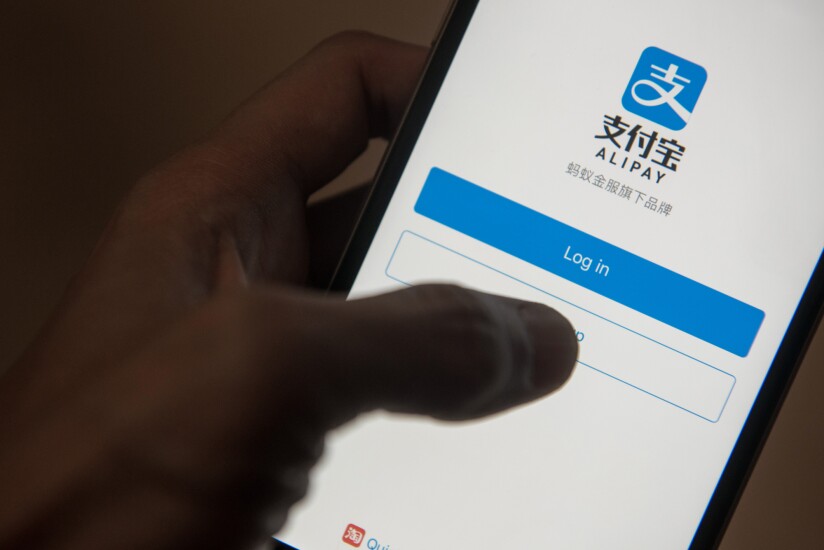
It's an important pivot point for the industry — consumer trust is threatened by a steady flow of data breaches, and consumers are divided on whether they want to stick with plastic or move on to mobile and wearable payments.
It's also clear that the strategies that work in a company's home country won't necessarily apply to their audiences in other parts of the world. This creates an even more pressing need to adapt quickly to changes in technology and regulation.

FICO takes a different view of data outside the U.S.
The methods that companies like Fair Isaac (FICO) deploy in other markets are designed to take into account the differences in how those markets are regulated. For example, in other markets FICO can make use of more sources of alternative credit scoring data.
"Outside the U.S. … we don't call it
In India and other parts of Asia, FICO uses digital footprint information, he said. In Russia, FICO uses psychometrics, leveraging a survey approach to help measure credit risk.

Visa and OXXO open 8 million accounts for Mexico's underbanked
In Mexico, this developed into a partnership with OXXO, the country's largest convenience store chain with about 15,000 locations, said
Four years ago, Visa and OXXO teamed up with Banamex to launch a simplified payment account, "which is basically a prepaid account that you can access with very low know-your-customer," which is performed at the OXXO store, Ortega said.
Since the product's launch, it has opened 8 million accounts, 44% of which belong to people who are new to the banking system, Ortega said. Of the remaining 56%, half of those who had a banking product didn't use it but they do use the OXXO card.
"We developed the product without knowing exactly what type of results we were expecting," Ortega said. But one thing was clear: The card had a bigger audience than just consumers.
In surveying users of the OXXO account, Visa found that 25% of use cases were related to operating a small business. "The next step for us was very natural," Ortega said.
To get a just the payment account, any consumer and business owner can pay $2 and spend 7 minutes in an OXXO store and walk out with a card. But extend that to $30 and 20 minutes, and the user also gets a mobile point of sale device. "You are included in the payment system and you are ready to accept payments," he said.

Green Dot's transition to top of wallet
Some of this has to do with shifting demographics. As the gig economy and prepaid cards draw more people into mainstream banking, the card providers that serve these audiences are no longer competing primarily with cash; they’re competing with one another.
“The roots of the company are the prepaid card, so a fairly low income demographic ... there, the problem is the opposite: It’s not [trying to be] top of wallet; you may be the only card in there,” said
Historically, Green Dot was competing primarily against other prepaid cards to be the one picked from the J-hooks of the stores that sell its products; today it’s competing just as much within the wallets of it customers, such as Uber drivers. Its recently launched

Where plastic has an advantage over mobile
“I’m a huge fan of these colored cores,” Wahler said. “When you’re looking in your wallet, it stands out.”
The core is visible only along the thin edge of the card, but that tiny splash of color is enough to tell a PayPal credit card (blue) from a Discover card (orange) or Capital One 360 (red). The color of a black card or a gold card signifies prestige, even when the card itself doesn’t offer the perks to back it up.
The
India’s IndusInd bank uses a textured pattern near the card’s top edge, so it can be easily identified and pulled from the wallet without looking. Japan’s JCB offers a scented card, which it markets to women.
“I’m not saying it’s the perfect solution, but it’s definitely an interesting approach to marketing towards women in Japan,” Wahler said.
Al Hilal Bank’s Shariah-compliant card has an embedded digital compass to point to Mecca for prayers. The account also has features that align with its users’ faith, such as not charging interest and devoting part of its fee-based revenue to charity. “They’re respecting the faith and assisting in the rituals of their customer,” he said. “They’re truly working with them from payments to their actual beliefs.”
None of this translates to the mobile environment, Wahler noted.
In mobile, “it’s like there’s no experience,” he said. “When you have the mobile payment, it’s not your brand. All your mobile experience is, is your brand on someone else’s device.”

Lessons from the most influential women in payments
“Early in my career, working for Wells Fargo, I was involved in a venture for a freewheeling startup (developing Billpoint to work as eBay’s first payment mechanism), and I realized that failing could mean the end of my career,” Rossi said.
Though eBay eventually phased out Billpoint when the company bought PayPal, Rossi’s experience developing a new concept was pivotal for her career. “What I learned was the value of taking chances and being willing to fail. It’s okay to rock the boat,” she said.
Rossi, who was named president of the Electronic Transactions Association in 2015, urges women in payments to grab chances when they appear. “Women often say they want a seat at the table, but sometimes when I make that happen, they say nothing. You must have an opinion, you must speak up. That’s what it means to be at the table,” she said.
Building a career in the payments is usually a long game, said Schwendeman, who’s spent 18 years in the industry. “You’ll meet many of the same people over and over, so work on developing relationships and keeping them intact, because you never really know who’s watching,” she advised.

Alipay reveals a hyper-local approach to North America
Instead of expanding Alipay’s geographic reach across the U.S. and Canada, Alipay is doubling down on merchant acceptance in urban areas and tourist zones to drive more spending volume, said
“A year ago Alipay aimed for ubiquity with all 8 or 9 million U.S. merchants, but the reality is that we want to focus on major cities and merchant categories that matter most to our customers,” he said. “Our growth is now coming from adding merchants within the most popular areas where Alipay users go."
Even within cities, Alipay is taking a more laser-focused approach to acceptance.
“We don’t need to cover all of Los Angeles—we only need to be in the key locations for major shopping, dining and tourist attractions,” Badran said.
Alipay is a product of Ant Financial, an affiliate of Alibaba. Its international user base consists primarily of Chinese tourists—more than 100 million citizens travel outside of China annually—and in North America it also serves millions of students and workers that use the app and receive a steady stream of deals and offers, according to Badran.
“For example, we know Alipay users’ locations so when they land in a city like Miami, we apply a lot of data and science to deliver them the right coupons and offers,” Badran said.

Analytics is changing the customer experience
“Each journey has a starting point or multiple starting points and an intended outcome,” she said. “What is everything happening in between those two spots, and are we doing what we need to do for the customer to provide a seamless, frictionless experience?”
The idea of such an experience isn't new and customer analytics have been in use forever. What’s innovative is examining what Wooters calls the “connective tissue” that connect points in a process, including anything that happens in operations, any risk or legal policies that may block a customer from a transaction, and interactions with partners.
“Being able to unpack these journeys and map them and redesign them in a way that includes our partners in operations, our vendors, our risk policies and how we may intervene or block them in access their own information or at the point of sale — these are all things that are important when it comes to breaking that journey apart,” Wooters said. “I truly believe that this is the right approach.”
At Synchrony Financial, Farrell Hudzik, senior vice president of enterprise customer engagement, is taking a similar approach.
The card company creates customer journeys for processes like authentication, “to get the true feel for what does it feel like when the customer goes through that, what can we do in those processes to provide things people feel comfortable with?” she said.





